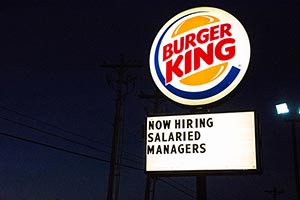Jobless Claims Unexpectedly Rise to One-Year High

Applications for unemployment benefits unexpectedly increased last week to the highest level since February 2015 as filings surged in New York.
Initial jobless claims rose by 20,000 to 294,000 in the week ended May 7, a report from the Labor Department showed May 11. The median forecast of economists surveyed by Bloomberg called for a decline to 270,000.
Economists will continue to monitor claims data in the coming weeks before concluding that the labor market is taking a bigger step back.
“New York accounted for most of the increase,” which was related to the Verizon strike that was concentrated in the state, said Jacob Oubina, a senior U.S. economist at RBC Capital Markets in New York. “It’s not a clean read. The labor market is looking pretty healthy and that’s going to continue.”
For 62 consecutive weeks claims have been below the 300,000 level that economists say is typically consistent with an improving job market. That’s the longest stretch since 1973. Applications in the previous week were unrevised at 274,000.
No states estimated filings for jobless benefits last week and there was nothing unusual in the data, according to the Labor Department.
In New York, jobless claims jumped by an unadjusted 14,647 last week. Smaller increases were reported in Pennsylvania and Michigan.
The four-week moving average of claims, a less volatile measure than the weekly figures, increased to 268,250 from 258,000.
The number of people continuing to receive jobless benefits rose by 37,000 in the week ended April 30, the biggest increase since the end of November, to 2.16 million. The unemployment rate among people eligible for benefits held at 1.6%. These data are reported with a one-week lag.
Initial jobless claims reflect weekly firings, and a sustained low level of applications has typically coincided with faster job gains. Layoffs can also reflect company- or industry-specific causes, such as cost-cutting or business restructuring.
A report last week showed that U.S. employers added 160,000 workers to their payrolls in April, the fewest since September and well below economists’ median forecast.
Another report from the Labor Department showed import prices rose 0.3% for a second month in April, largely reflecting a pickup in petroleum and food. While industrial supply costs increased, prices declined for consumer and capital goods made overseas.

